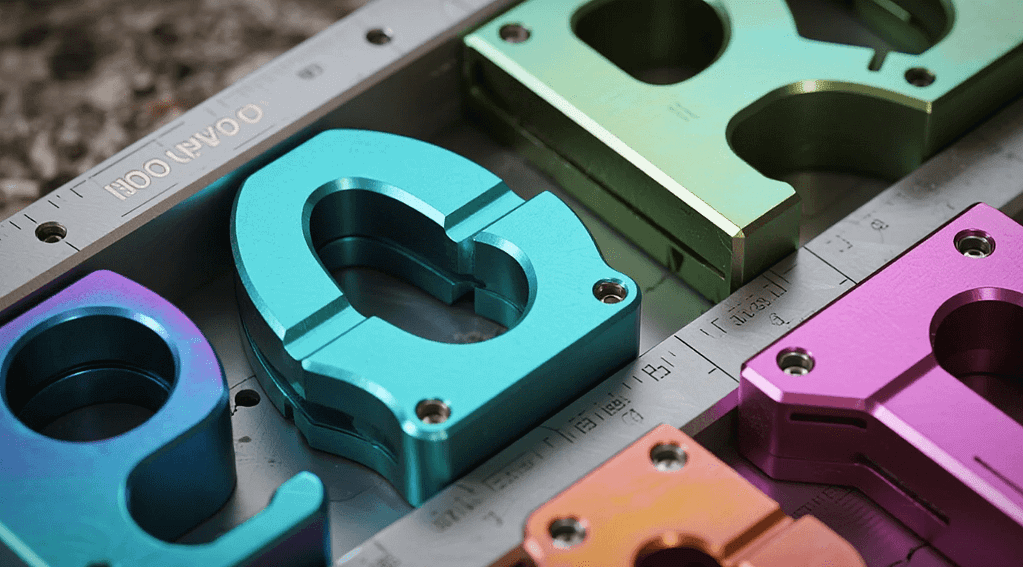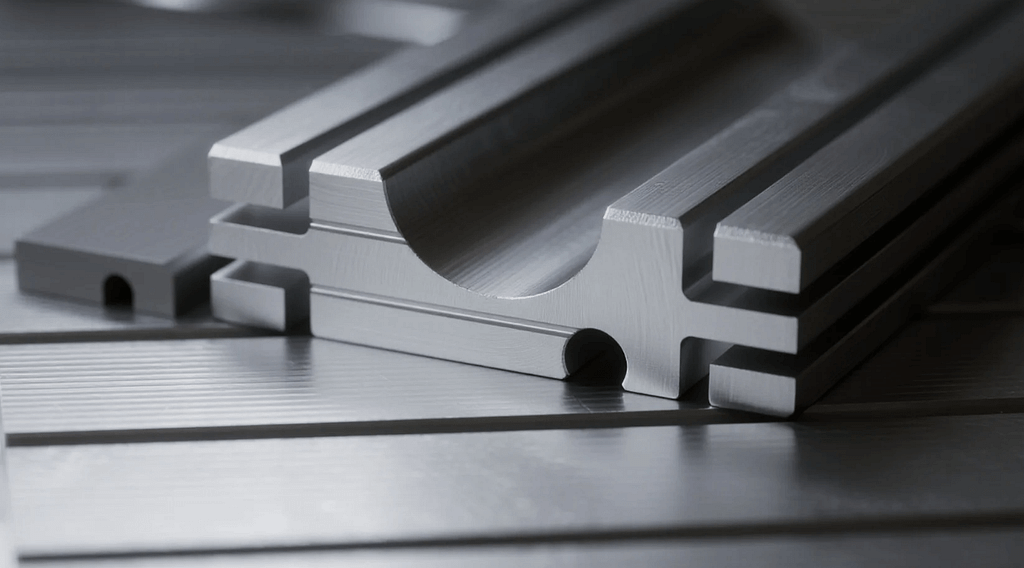In the competitive landscape of industrial design and product development, achieving both aesthetic appeal and robust performance is paramount. This pursuit often leads innovators to select materials that can deliver on both fronts. Among these, anodized aluminum stands out as a highly versatile and valuable solution, offering a unique combination of enhanced durability, corrosion resistance, and striking visual versatility. For businesses that specialize in or require precision industrial model services, understanding the benefits and applications of anodized aluminum is crucial. This article delves into the fascinating process behind this material, highlighting its key characteristics and why it has become an indispensable choice for creating high-quality, long-lasting prototypes and finished components.
What is Anodized Aluminum?
Anodized aluminum refers to aluminum that has undergone an electrolytic passivation process called anodizing. This electrochemical process converts the metal’s surface into a durable, corrosion-resistant, anodic oxide finish. Unlike painting or plating, which apply a coating to the surface, anodizing grows an integral layer from the aluminum itself. This means the finish won’t chip, peel, or flake, providing superior longevity and adhesion. The resulting surface is significantly harder than raw aluminum, offering enhanced wear resistance and an aesthetically pleasing appearance, often with vibrant, fade-resistant colors.
The Anodizing Process: A Deeper Look
Understanding how anodized aluminum is created sheds light on its unique properties. The process typically involves several key steps:
Cleaning and Preparation
The aluminum part is first thoroughly cleaned to remove any oils, dirt, or existing oxides. This ensures a uniform and high-quality anodic layer. Any surface imperfections or contaminations can impact the final finish.
Anodizing (Electrolytic Process)
The cleaned aluminum part is immersed in an electrolyte solution (typically an acid bath) and acts as the anode (positive electrode) in an electrical circuit. A cathode (negative electrode) is also placed in the solution. When an electric current passes through the solution, oxygen ions are released from the electrolyte and combine with the aluminum atoms on the surface, forming an aluminum oxide layer. This layer grows outward from the surface and also penetrates into the aluminio, creating an exceptionally strong bond. The thickness and porosity of this layer can be controlled by varying the current density, voltage, and time.
Coloring (Optional)
If a colored finish is desired, the porous anodic layer can be dyed. Organic dyes are absorbed into the pores of the oxide layer, producing a wide spectrum of colors. Alternatively, electrolytic coloring (two-step anodizing) deposits metal salts into the pores, creating more stable and weather-resistant colors, typically bronzes and blacks. This ability to achieve various hues makes anodized aluminum incredibly versatile for visual prototyping.
Sealing
The final and crucial step is sealing. The pores in the anodic oxide layer are naturally porous. Sealing closes these pores, preventing the absorption of contaminants and significantly enhancing the corrosion resistance and dye fastness of the anodized aluminum. Without proper sealing, the benefits of the anodic layer would be greatly diminished.
Key Characteristics and Advantages of Anodized Aluminum

The unique properties imparted by the anodizing process make anodized aluminum a superior material choice for countless applications, particularly within the realm of precision industrial models.
Enhanced Corrosion Resistance
One of the primary benefits of anodized aluminum is its exceptional resistance to corrosion. The anodic oxide layer is chemically inert and forms a robust barrier against environmental degradation, including saltwater, acidic rain, and various industrial chemicals. This is particularly valuable for industrial models that may be exposed to harsh conditions during testing or for products intended for outdoor or marine environments. It ensures the model maintains its integrity and appearance over time.
Increased Surface Hardness and Wear Resistance
The anodic oxide layer is significantly harder than raw aluminum, often approaching the hardness of sapphire (depending on the specific anodizing process, such as hardcoat anodizing). This increased surface hardness provides superior resistance to scratches, abrasions, and general wear and tear. For precision industrial models, this means prototypes can withstand repeated handling, functional testing, and transportation without showing significant signs of wear, preserving their visual and structural integrity.
Excellent Aesthetic Appeal and Color Versatility
Anodized aluminum offers a premium, high-quality aesthetic. The ability to incorporate a wide range of vibrant, uniform, and fade-resistant colors (especially with proper sealing) provides immense design flexibility. Unlike painted surfaces, the color is integrated into the oxide layer, giving it a depth and richness that is highly desirable for consumer products and high-end industrial models. This allows designers to create visually compelling prototypes that accurately represent the final product’s intended appearance.
Electrical Insulation Properties
The anodic oxide layer is an electrical insulator. While pure aluminum is highly conductive, the anodized surface can prevent short circuits or unintended electrical pathways. This property can be beneficial for industrial models of electronic enclosures or components where electrical isolation is required on certain surfaces.
Environmentally Friendly Process
Anodizing is considered an environmentally friendly process. It uses non-toxic materials, and aluminum is a highly recyclable material. The process also produces fewer volatile organic compounds (VOCs) compared to painting or other coating methods. This aligns with modern manufacturing’s emphasis on sustainable practices.
Anodized Aluminum in Precision Industrial Models

For businesses that provide or require precision industrial model services, leveraging anodized aluminum is a strategic decision that elevates the quality and functionality of prototypes.
High-Fidelity Prototypes with Production-Like Finish
Anodized aluminum allows for the creation of industrial models that not only accurately represent the geometry of a design but also its intended surface finish and color. This means prototypes can closely mimic the final production part, providing a more realistic and compelling representation for design reviews, marketing presentations, and user testing. The durability of the anodized finish also ensures these high-fidelity models maintain their pristine appearance even with repeated handling.
Functional Testing in Challenging Environments
When industrial models need to undergo rigorous functional testing in conditions that simulate the real world (e.g., exposure to moisture, temperature fluctuations, or abrasive contact), anodized aluminum provides the necessary resilience. Its enhanced corrosion and wear resistance ensure that the model performs reliably during testing, yielding accurate and dependable data. This is crucial for validating product designs before committing to mass production.
Demonstrating Premium Quality and Durability
For product manufacturers, presenting an industrial model made from anodized aluminum immediately conveys a sense of premium quality, durability, and attention to detail. This is particularly impactful for products in high-end consumer electronics, automotive, or aerospace sectors, where material quality is a key differentiator. The rich, integrated color and hard surface finish of anodized parts significantly enhance the perceived value of the prototype.
Accelerating Design Verification
By providing models with true-to-design properties, anodized aluminum helps accelerate the design verification process. Engineers can confidently assess fit, form, and function knowing that the prototype’s material characteristics closely align with the intended final product. This reduces the need for multiple iterations or re-prototyping, saving both time and cost in the development cycle.
Considerations for Working with Anodized Aluminum
While highly advantageous, there are specific considerations when designing parts for anodized aluminum to ensure optimal results.
Material Grade and Alloy Selection
Not all aluminum alloys anodize equally. Certain alloys, like 6061 and 6063, are excellent for anodizing and produce consistent, vibrant colors. Others, like 2000-series alloys, contain higher copper content and can result in mottled or brownish finishes. Consulting with an experienced anodized aluminum service provider is crucial for selecting the appropriate alloy for your application and desired finish.
Surface Finish Before Anodizing
The surface finish of the aluminum before anodizing significantly impacts the final aesthetic. Any scratches, tool marks, or inconsistencies will be visible, and often magnified, by the anodic layer. Therefore, proper machining, polishing, or blasting prior to anodizing is essential to achieve a high-quality finish on industrial models.
Design for Anodizing
Designers should be aware of certain considerations, such as sharp corners, which can experience excessive current density and lead to burning. Similarly, blind holes or trapped air pockets can affect uniform coating. Working with an experienced anodized aluminum service provider who can offer Design for Manufacturability (DFM) feedback is highly beneficial.
Cost Implications
While offering superior properties, the anodizing process adds to the overall cost of the part compared to raw aluminum. However, this added cost is often justified by the enhanced durability, aesthetics, and longevity, especially for precision industrial models that represent a significant investment in product development.
The Future of Anodized Aluminum in Product Development
The advancements in anodized aluminum technology continue to evolve, driven by demands for even greater performance, broader color palettes, and more sustainable processes. We can anticipate innovations in advanced sealing techniques for even greater corrosion resistance, new dyeing methods for expanded color options, and enhanced control over micro-structures for tailored properties. For precision industrial models, this means an ever-increasing ability to create prototypes that are virtually indistinguishable from final production parts, pushing the boundaries of realism and functional testing. The commitment to ethical and environmentally conscious practices will remain a guiding principle in these advancements.
Conclusión
Anodized aluminum is a powerful material finishing solution that significantly elevates the quality, durability, and aesthetic appeal of aluminum components. For businesses seeking precision industrial model services, leveraging the benefits of anodized aluminum is a strategic decision that provides high-fidelity prototypes, withstands rigorous testing, and effectively communicates premium product quality. Its unique combination of enhanced corrosion and wear resistance, coupled with striking color versatility, makes it an indispensable choice in modern product development. As technology progresses, anodized aluminum will undoubtedly continue to play a crucial role in bringing innovative and robust designs to life, from concept to market.
PREGUNTAS FRECUENTES
Q1: What is the main benefit of anodizing aluminum for industrial models?
A1: The main benefit is creating a highly durable, corrosion-resistant, and aesthetically appealing surface that significantly enhances the model’s longevity, visual fidelity, and ability to withstand functional testing.
Q2: Can anodized aluminum be colored?
A2: Yes, anodized aluminum can be dyed in a wide range of vibrant, fade-resistant colors during the anodizing process, offering extensive aesthetic versatility for industrial models.
Q3: How does anodized aluminum compare to painted aluminum in terms of durability?
A3: Anodized aluminum is generally much more durable than painted aluminum. The anodic layer is an integral part of the metal, making it resistant to chipping, peeling, and flaking, unlike a surface-applied paint coating.
Q4: Is anodized aluminum electrically conductive?
Q4: No, the anodic oxide layer formed on anodized aluminum is an electrical insulator, which can be a beneficial property for certain electronic components or enclosures.
Q5: What are common applications for anodized aluminum beyond industrial models?
Q5: Common applications include architectural components (windows, facades), consumer electronics (smartphones, laptops), automotive parts, sporting goods, medical devices, and aerospace components.
Q6: Does the type of aluminum alloy matter for anodizing?
Q6: Yes, the aluminum alloy significantly impacts the quality and consistency of the anodized finish. Alloys like 6061 and 6063 are generally preferred for their excellent anodizing properties and consistent color results.
Q7: How does anodizing contribute to sustainability?
Q7: Anodizing is an environmentally friendly process compared to many other surface treatments. It uses non-toxic materials, produces fewer VOCs, and aluminum itself is highly recyclable, aligning with sustainable manufacturing practices.
